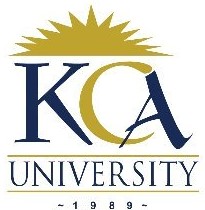 UNIVERSITY EXAMINATIONS: 2017/2018
UNIVERSITY EXAMINATIONS: 2017/2018
EXAMINATION FOR THE DEGREE OF BACHELOR OF SCIENCE IN
INFORMATION TECHNOLOGY /BACHELOR OF SCIENCE IN
INFORMATION COMMUNICATIONS TECHNOLOGY / BACHELOR OF
APPLIED COMPUTING
BIT4302 TELECOMMUNICATIONS
FULL TIME/PART TIME/DISTANCE LEARNING
DATE: DECEMBER, 2018 TIME: 2 HOURS
INSTRUCTIONS: Answer Question One & ANY OTHER TWO questions.
QUESTION ONE [30 MARKS]
a) Describe the categorization of:
(i) Communication satellites 3 Marks
(ii) Satellite orbits 3 Marks
b) State any four features of Bluetooth network. 4 Marks
c) Discuss in detail how RFID works and the applications of RFID. 8 Marks
d) Mobile phone networks use the concept of “frequency re-use” in deployment of their
services.
(i) Define frequency re-use and give one fundamental requirement that should
govern frequency re-use. 2 Marks
(ii) Determine the portion of the frequency band that can be used in one cell in a 4-
cell reuse pattern and 7-cell reuse pattern, assuming a 25 MHz band allocated to the
operator. 2 Marks
(iii) If the uplink frequencies are 898.3MHz and 912.5 MHz, what are the
corresponding downlink frequencies? 2 Marks
e) Wireless LANs can accommodate various network topologies. The standard defines a
BSS as a group of stations that communicate with each other. In this regard, discuss briefly the
following 802.11 toplogies:
(i) Ad hoc networks. 2 Marks
(ii) Basic Service Set (BSS) 2 Marks
(iii) Extended Service Set (ESS) 2 Marks
QUESTION TWO [20 MARKS]
a) Distinguish between “piconet” and “scatternet” as used in Bluetooth technology.
4 Marks
b) (i) Define the term convergence s used in Computer networks 1 Mark
(ii) Converged networks have existed for a while now, but were only feasible in large
enterprise organizations. Why? 4 Marks
(iii) Why is it difficult for some organizations to make a decision to move towards
converged networks? 2 Marks
c) WANs use numerous types of devices that are specific to WAN environments. Describe
any five of these devices 5 Marks
d) State four major differences between WLANs and wired Ethernet. 4 Marks
QUESTION THREE [20 MARKS]
a) State the following basic features of GSM:
(i) Access method 1 Mark
(ii) BS transmission band 1 Mark
(iii) MU transmission band 1 Mark
(iv) Channel bandwidth 1 Mark
(v) Users per channel 1 Mark
b) State the causes of the following errors:
(i) White noise 2 Marks
(ii) Crosstalk 2 Marks
(iii) Attenuation 2 Marks
(iv) Intermodulation noise 2 Marks
(v) Jitter 2 Marks
c) State five functions performed by processes running on intermediary devices.
5 Marks
QUESTION FOUR [20 MARKS]
a) Describe the sequence of events that occur between computer and modem during
communication. 7 Marks
b) With the aid of a diagram explain the basic communication model. 5 Marks
c) If the time required for the completion of one sine wave is 0.5 s, what is the frequency of
the wave? If the wave’s period is reduced to 0.005 s, what is its new frequency? 4 Marks
d) Define the following terminologies as used in telecommunications:
(i) Simplex 1 Mark
(ii) Half Duplex 1 Mark
(iii) Full Duplex 1 Mark
(iv) Connection-oriented network service 1 Mark
QUESTION FIVE [20 MARKS]
a) ITU is divided into three main sectors: ITU-R, ITU-T and ITU-D. Explain the role of
each sector. 6 Marks
b) Discuss the three major transmission impairments experienced by signals. 6 Marks
c) The development of communications-based applications which are the foundation of our
modern society involves many trade-offs in terms of the use of different types of
communications facilities, types of terminal devices, hours of operation and other constraints.
Four of the key constraints associated with the development of communications applications are
throughput, response time, bandwidth and economics. Discuss how each of these constraints
affect communication. 8 Marks
